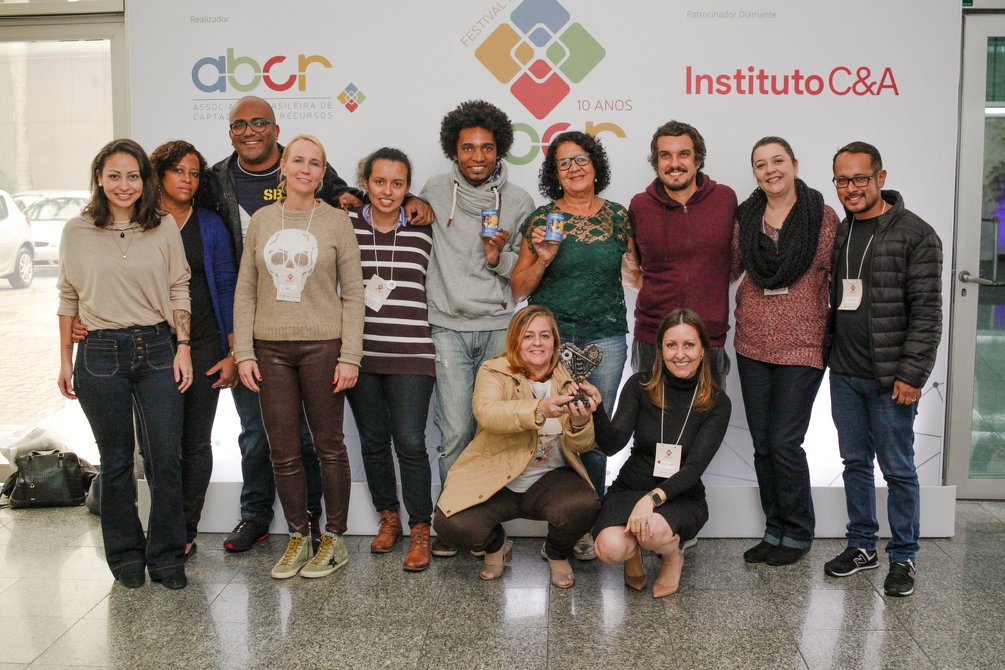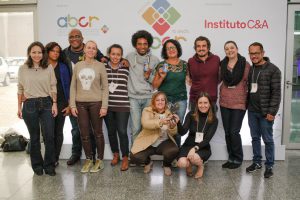How can fundraising thrive in Brazil?

What is interesting about a country where the giving culture is still developing? A country with thousands of non-profits, many of them volunteer-based and some other trying to figure out the basics of fundraising? At the same time, a country where we can also find many of the big INGOs, like Amnesty International, Medecins Sans Frontiers, Oxfam, Greenpeace, with their advanced knowledge and strategies in fundraising? A country with all sorts of educational, health, poverty, human rights and environmental issues that the non-profits are fighting for?

Photos courtesy of ABCR
In a recent research on giving in Brazil (organized by IDIS – Institute for the Development of Social Investment with the support of CAF – the Charities Aid Foundation, among other partners), some numbers deserve attention as we have a clue of what Brazilians think about giving. 66% of the people heard in the research believe that social issues as a whole are a sole responsibility of the government; 45% of the interviewed do not trust non-profits. At the same time, the research also shows great consciousness of the existence of great social differences as well as of a huge demand in fundamental aspects by the population. And, very importantly and filled with hope, 66% of the people understand that giving makes a difference. These figures are intriguing.
As I am responsible for the individual giving area of ISA – Instituto Socioambiental, an environmental and indigenous peoples rights organization, I often ask myself this question: How can fundraising thrive in Brazil? The organization I work for faces a common challenge for many others: with international cooperation institutions changing priorities and decreasing their funds directed to Brazil, individual giving is the main strategy to go. But that is a long-term investment with even longer-term return. And Brazil still has a long way until we can say its philanthropy and its giving culture are developed.

Photos courtesy of ABCR
As a fundraiser who does not enjoy isolation, attending conferences is the best way to connect with my peers, understand our common challenges, learn from their experience, share my own experience. Meet friends. Attend sessions or, even better, connect with people I am meeting for the first time.
Between June 6th and 8th I attended the ABCR Festival, the fundraising conference organized by the Brazilian Association of Fundraisers. Its 10th edition, with almost 600 participants, had the participation of several international speakers – among them, Bill Toliver, Chair of the Board of The Resource Alliance.
Imploding the comfort zone
Sessions and discussions included a huge range of issues we are facing in Brazil now. From fundraising basics – like how to set up a telemarketing program and how to have a direct mail program, to more advanced issues like a research on middle donors thoughts about giving, what is ethics in fundraising and how to do legacies fundraising – these three days were filled with knowledge and experience exchange and a lot of inspiration.

Photos courtesy of ABCR
The opening plenary with Bill Toliver as the keynote speaker was the perfect start for the conference. It was inspiring, mind-blowing and it imploded the comfort zone in which we, in the audience, could have. It provoked us to do things differently, in a much more authentic way.
Looking at everything I have learned these days, some reflections – apart from my main question – come to my mind.

Photos courtesy of ABCR
Fundraising is a sector that is under consolidation now. It is a growing field but not big enough yet. There is for sure a gap between the growth, the professionalization and the needs of this sector compared on sources to fund it – either with individual giving or grant-making. Philanthropy is still mostly linked to the concept of charity, and not to social investment. There is also a clear lack of giving culture – individuals in Brazil do not seem to see giving as a possibility, neither do they know the reason for and the power of giving. And many of the ones who could give do not trust organizations enough in order to do so. There is also a lack of regulation for donations and tax exemption.
We are on the way!
But we are on the way, building from scratch bit by bit. We have several advocacy initiatives towards tax exemption and special payment tariffs for donation transactions. We do not have a lot of grant-making nor social investment, but we have a growing interest on these issues.
We are trying to build trust among individuals who could give – and recently a certification was made available for non-profits that consider accountability, transparency and governance. We certainly have to develop our giving culture, but there is a working group for that, and a campaign will soon take place, nationally, to develop it.

Photos courtesy of ABCR
The 10th edition of the ABCR Festival was completely different from its first edition. We do have some inconsistencies, but we are facing them. We are learning by doing: we are trying to be better fundraisers as we fundraise, we are trying to change the fundraising context as we look after our own institutions sustainability. After writing these lines, now I realize I cannot be unfair to say fundraising is not thriving in Brazil – there is a long way ahead until we have a developed fundraising culture, but we are certainly in the right direction!
6 Comments
Kieranpaul · July 23, 2024 at 03:29
I like this culture, who could give – and recently a certification was made available for non-profits that consider accountability, transparency and governance. We certainly have to develop our giving culture, strands hint today
Drive Mad · August 1, 2024 at 02:15
Players navigate through various terrains, from bustling city streets to rugged off-road tracks, all while maintaining control of their vehicle and avoiding crashes.
AINameGenerator · December 6, 2024 at 05:58
Love this insight! It’s really refreshing to see the optimism about Brazil’s fundraising scene. Building a giving culture takes time, but every step counts. Looking forward to seeing how things evolve!
show more · July 12, 2025 at 14:01
I play Slice Master every day. The controls are smooth, and the graphics are nice. It’s a simple game, but very addictive. Perfect for short breaks or free time.
alhuna · August 8, 2025 at 02:40
Unlike many simulation games, monkey mart offers a uniquely relaxing atmosphere, where even the most complex store management tasks feel rewarding and satisfying, thanks to intuitive gameplay and adorable monkey-themed graphics.
castle apk · August 8, 2025 at 21:37
The Castle App download is the easiest way to turn your device into a full entertainment hub. After installing the Castle APK, I connected it to Castle TV, and it’s like having Netflix but without fees. So far, it’s been stable, smooth, and worth recommending.